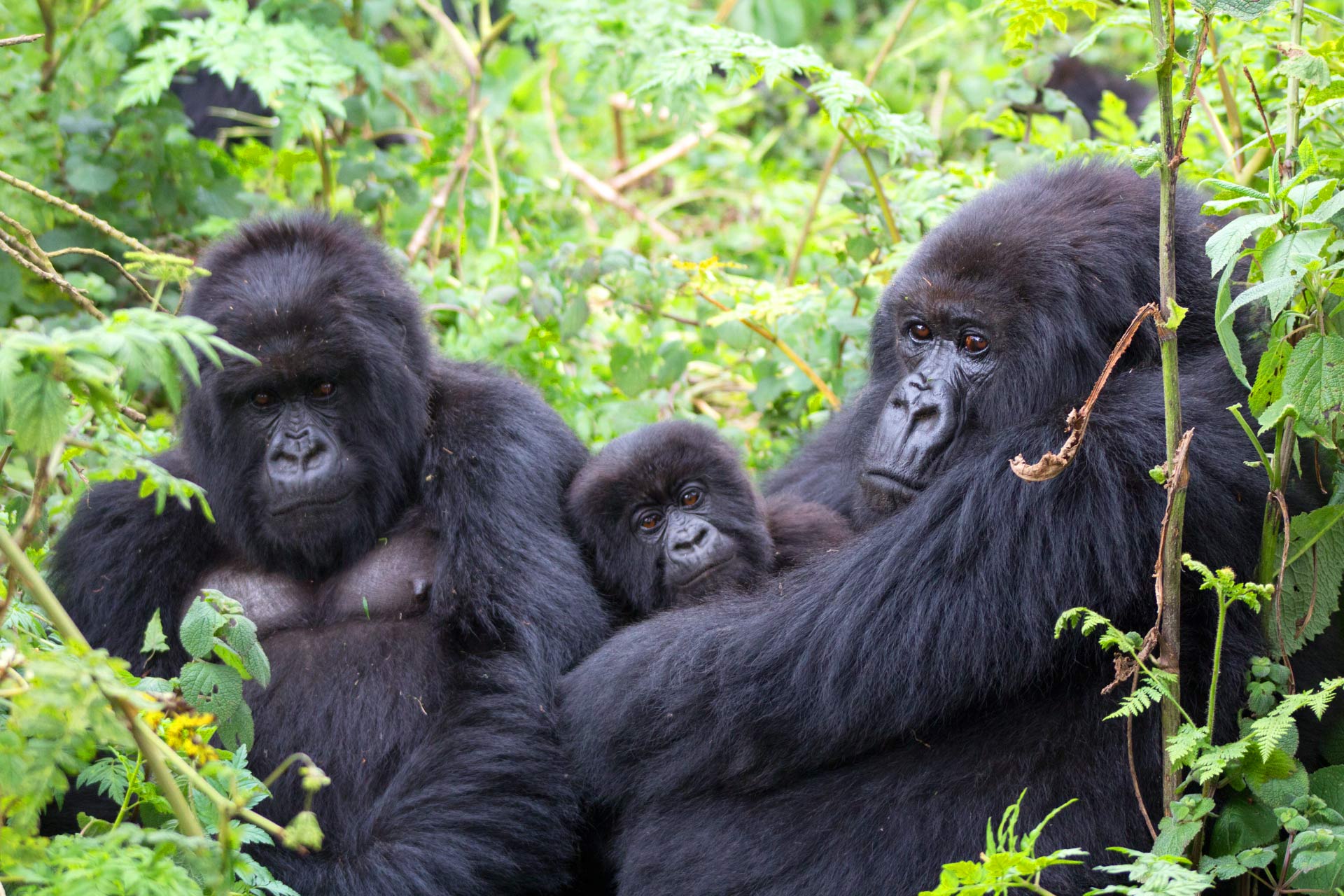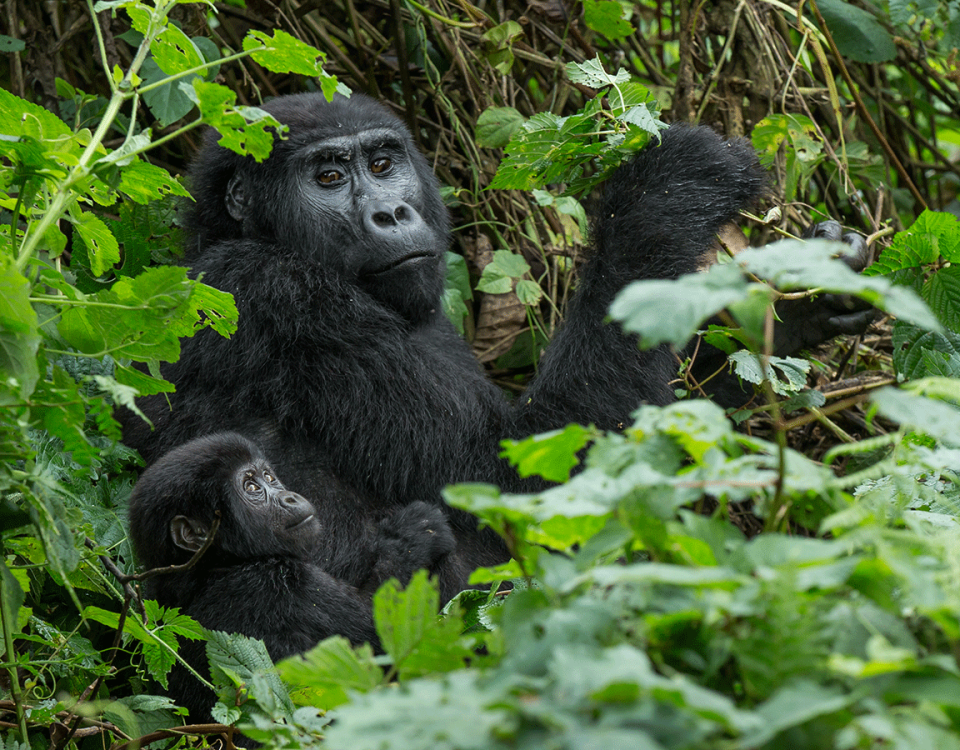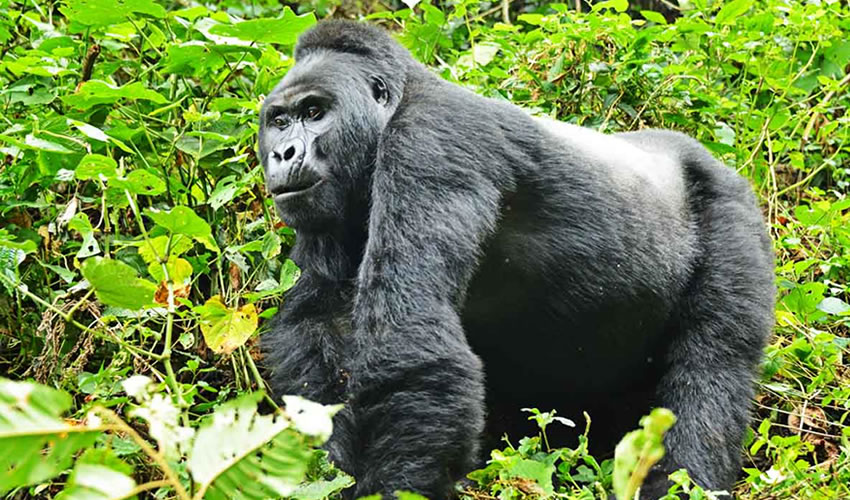
Best Time for Gorilla Trekking in Uganda 2025
Best Time for Gorilla Trekking in Uganda 2025. Uganda, often referred to as the “Pearl of Africa,” is home to breathtaking landscapes and incredible wildlife, with mountain gorillas being one of its most iconic attractions. Gorilla trekking in Uganda is an unforgettable experience that allows travelers to come face-to-face with these majestic creatures in their natural habitat. However, timing plays a crucial role in ensuring a successful and enjoyable trek. In this detailed guide, we explore the best times for gorilla trekking in Uganda, taking into account factors like weather, trekking conditions, permit availability, and overall experience.

Understanding Mountain Gorillas
Mountain gorillas are critically endangered primates that reside in the dense forests of East Africa. Uganda is home to over half of the world’s mountain gorilla population, primarily found in Bwindi Impenetrable Forest and Mgahinga Gorilla National Park. Trekking to see these gentle giants offers a unique insight into their behavior, diet, and family structures, making it a once-in-a-lifetime experience for wildlife enthusiasts.
Uganda’s Climate: An Overview
Before diving into the specifics of gorilla trekking, it is essential to understand Uganda’s climate. Situated near the equator, Uganda enjoys a tropical climate characterized by two rainy seasons and two dry seasons each year. The rainy seasons typically occur from March to May and from October to November, while the dry seasons span from December to February and June to September. This variation in weather significantly influences trekking conditions in the dense forests where mountain gorillas reside.
The Bwindi Impenetrable Forest and Mgahinga Gorilla National Park, Uganda’s two premier gorilla trekking destinations, are located in high-altitude areas. These regions experience cooler temperatures, which range between 7°C (45°F) and 20°C (68°F). The dry and rainy seasons impact trail conditions, vegetation density, and even the gorillas’ behavior, making it essential to choose your trekking season wisely.
The Dry Seasons: Ideal for Gorilla Trekking
The dry seasons, from December to February and June to September, are widely regarded as the best times for gorilla trekking in Uganda. During these months, rainfall is minimal, resulting in drier trails that are easier to navigate. The dense vegetation of the rainforest is slightly less thick, improving visibility and increasing the chances of spotting gorillas quickly. Furthermore, the dry conditions reduce the likelihood of slippery and muddy paths, making the trek less physically demanding.
Another advantage of trekking during the dry seasons is the pleasant weather. With fewer downpours, you can fully enjoy the lush surroundings of Bwindi Impenetrable Forest or Mgahinga Gorilla National Park without worrying about sudden showers interrupting your experience. The drier months also tend to attract more tourists, creating a vibrant atmosphere as fellow travelers share their adventures.
Rainy Seasons: A Unique Perspective
While the dry seasons are favored by many, the rainy seasons (March to May and October to November) also offer unique advantages for gorilla trekking. During these months, the forests are at their most vibrant, with the rains rejuvenating the flora and creating an awe-inspiring green canopy. Photographers, in particular, appreciate this period for its dramatic lighting and lush backdrops.
Another benefit of trekking in the rainy season is the reduced number of visitors. The quieter trails provide a more intimate and serene experience, allowing trekkers to connect with nature and the gorillas on a deeper level. Additionally, accommodation rates are often lower during these months, making it an attractive option for budget-conscious travelers.
However, it is important to note that trekking during the rainy season comes with challenges. The trails can become slippery and more challenging to traverse, requiring sturdy footwear and an adventurous spirit. Rain gear is essential, as sudden downpours are common. Despite these hurdles, many trekkers find the experience rewarding and memorable.
Permit Availability and Planning
Gorilla trekking permits are a critical consideration when planning your trip. Uganda’s permits are limited to protect the gorillas and their habitat, and they often sell out quickly, particularly during the dry seasons. It is advisable to book your permit several months in advance, especially if you plan to visit during peak periods.
As of 2024, a gorilla trekking permit in Uganda costs $800 per person. This fee allows you to spend an hour observing a gorilla family in their natural environment and contributes to conservation efforts and community development. Regardless of the season, securing your permit early ensures you won’t miss out on this once-in-a-lifetime experience.
The Importance of Proper Gear
Proper preparation is crucial for a successful trekking experience. Whether you choose the dry or rainy season, having the right gear can make all the difference. Essential items include sturdy hiking boots, waterproof clothing, insect repellent, and a comfortable backpack for carrying snacks and water. Trekking poles are also highly recommended, especially during the rainy season, to help navigate steep and slippery trails.
Choosing the Right Season for You
Deciding when to go gorilla trekking in Uganda ultimately depends on your preferences and priorities. If you value comfort and ease of trekking, the dry seasons are your best bet. On the other hand, if you are drawn to vibrant landscapes and a quieter experience, the rainy seasons might be more suitable.
No matter when you visit, preparation is key. Pack appropriately for the season, including waterproof gear for the rainy months or lightweight clothing for the dry season. Comfortable hiking boots, insect repellent, and a sturdy backpack are essential year-round. With the right gear and mindset, you can make the most of your adventure.
Community and Conservation Impact
Participating in gorilla trekking in Uganda also contributes to local communities and conservation efforts. A significant portion of the permit fees is directed towards gorilla conservation programs and community development projects. By choosing to trek in Uganda, you are playing a vital role in protecting these endangered animals and supporting the livelihoods of local communities.

Conclusion
Gorilla trekking in Uganda is an extraordinary experience that offers unparalleled opportunities to witness one of the world’s most endangered species. Whether you choose to trek during the dry seasons for easier trails and pleasant weather or embrace the rainy seasons for their lush beauty and tranquility, the journey will leave you with lifelong memories. By understanding the nuances of Uganda’s climate and planning accordingly, you can ensure that your gorilla trekking adventure is as rewarding as it is unforgettable.
Related Posts;
